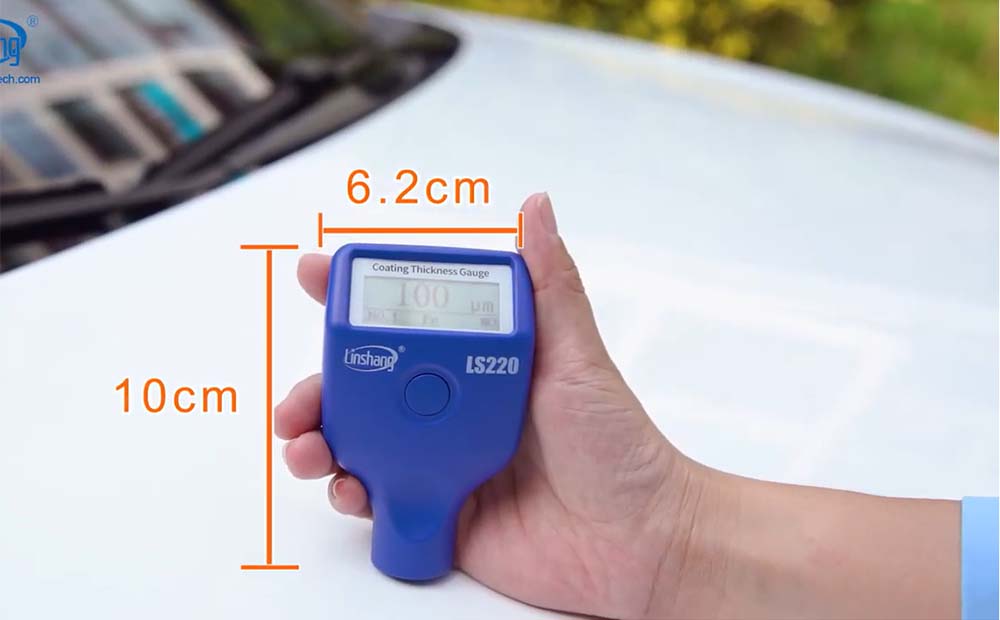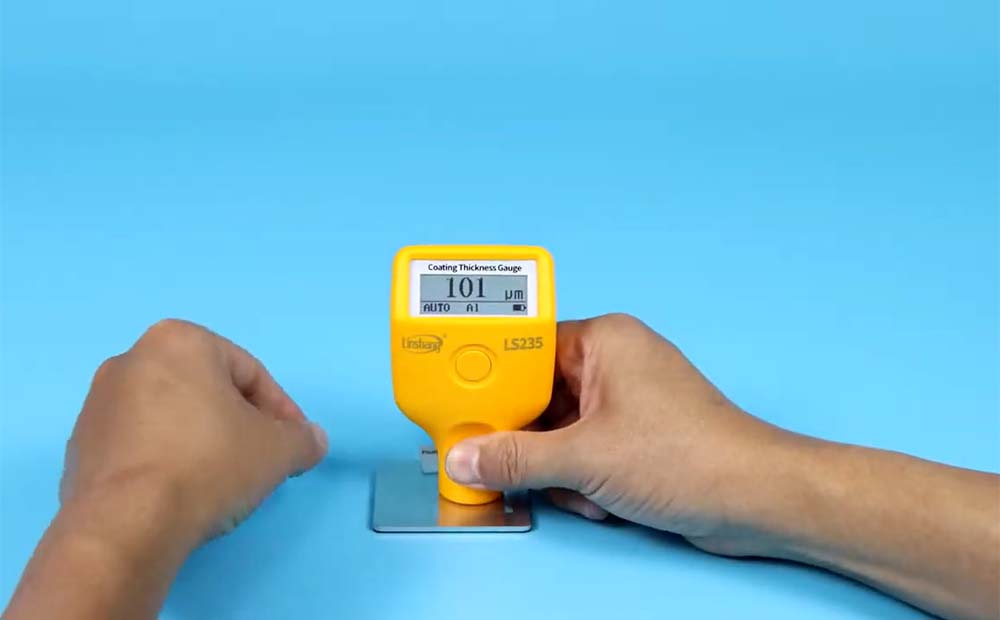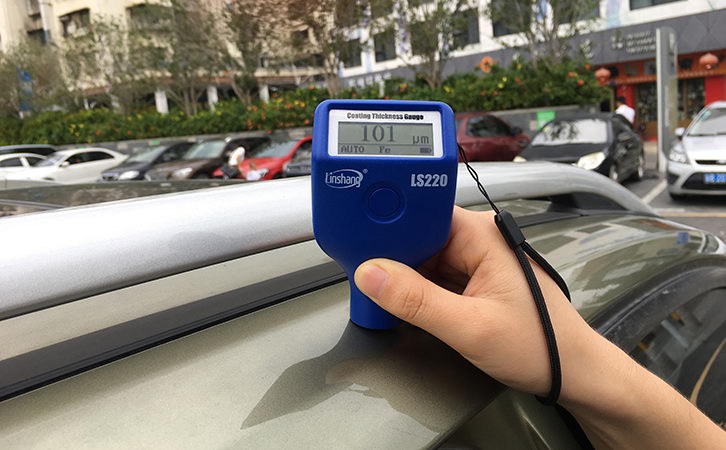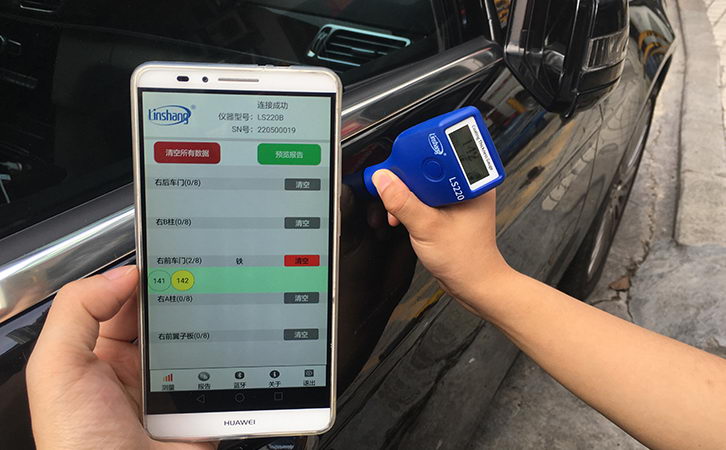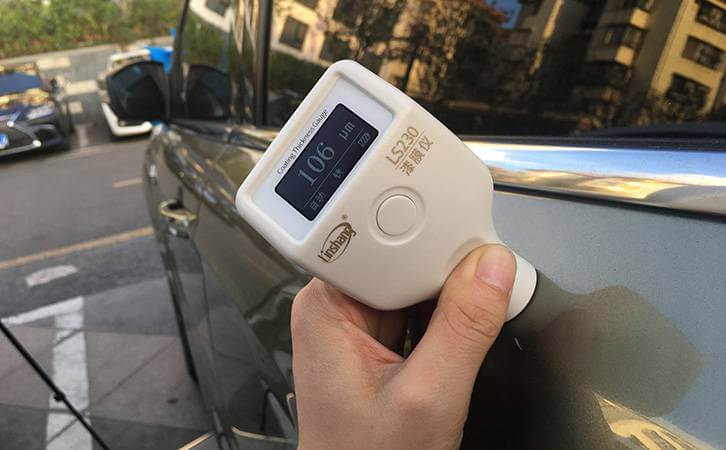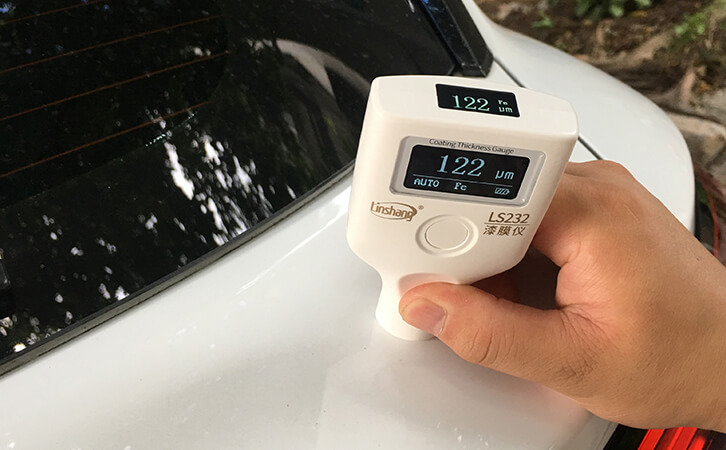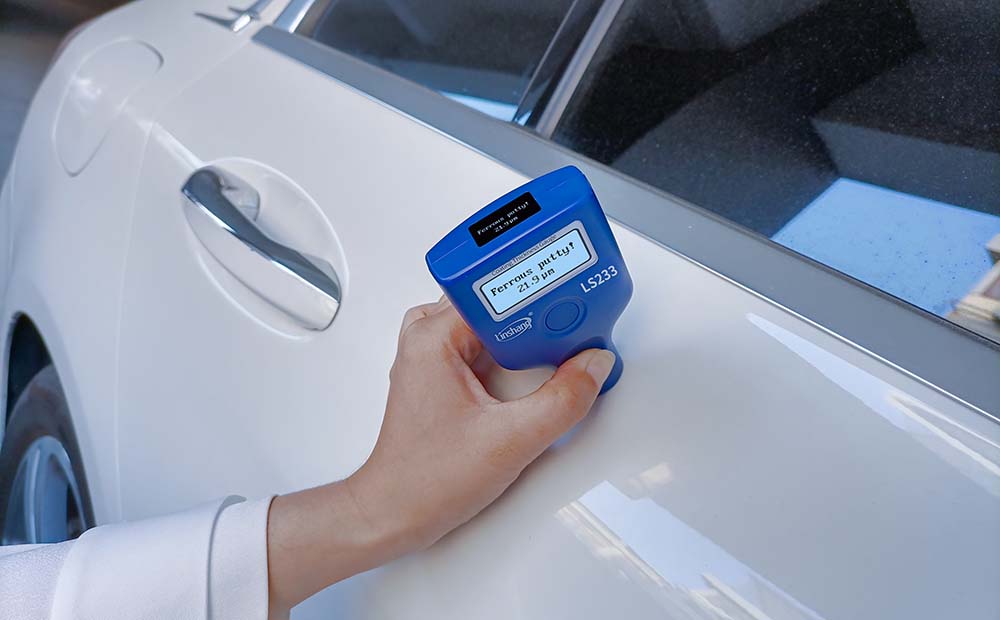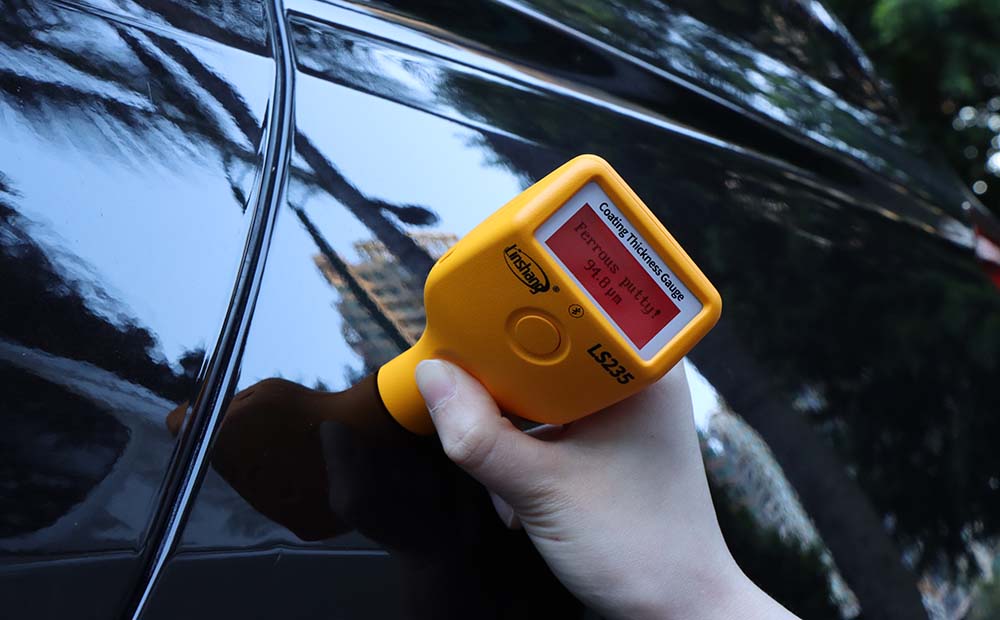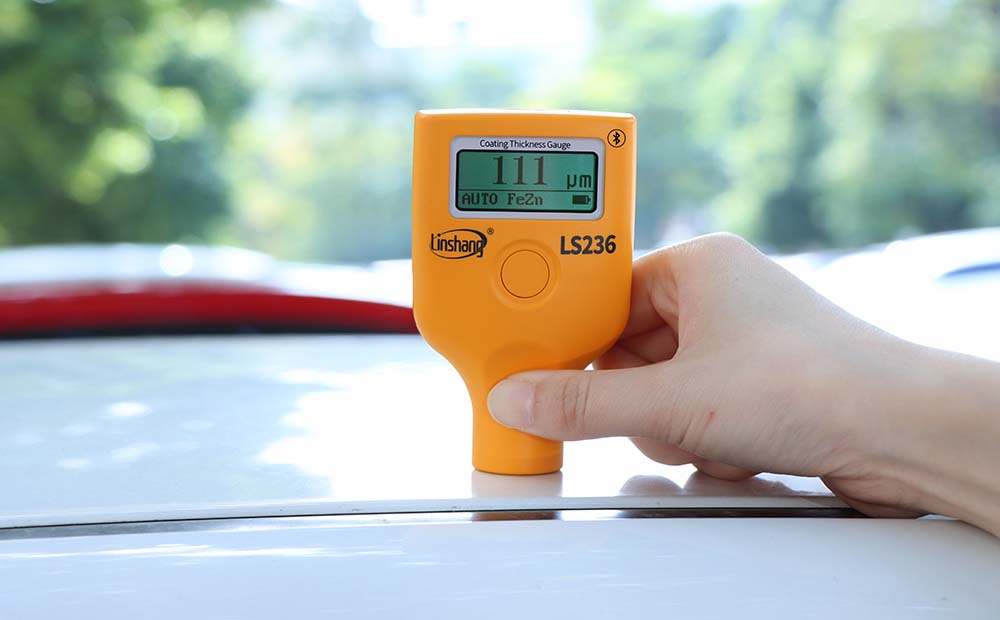Guide for Selecting Car Paint Thickness Tester
Paint thickness testers, also called paint thickness meters, are mainly used to measure the thickness of paint layers on automotive paints and other various metal substrates. As a paint thickness gauge manufacturer, Linshang Technology provides three cost-effective car paint thickness testers. How to choose a practical car paint thickness tester, this article will provide you with a guide for car paint thickness testers selection.
I.Car paint thickness tester principles and application
Paint thickness tester can be used to detect the coating thickness on various metal substrates, mainly using two measurement principles of magnetic induction and eddy current. The principle of magnetic induction is mainly suitable for measuring the coating thickness of paints, powders, various electroplated layers and oxide layers on ferromagnetic metal substrates such as steel and iron. The eddy current principle is mainly used to measure aluminum, copper, zinc and the non-conductive coating thickness such as paint, rubber, enamel, and ceramic layers on non-magnetic metal substrates.
At present, the most common application is used to measure the paint film thickness on the surface of second-hand cars, so it is also called a car paint thickness tester. In the used car industry, a car paint thickness tester is needed to detect the film thickness of various parts of the car. Based on this, the historical repair situation of the used car is evaluated.
II.Best paint thickness tester
Linshang Technology provides seven cost-effective car paint thickness testers, the models are LS220, LS220B and LS230. They have the same measurement accuracy, measurement range, data repeatability and reproducibility, the appearance size is basically the same, using two measurement principles of magnetic induction and eddy current. These car paint thickness testers are suitable for measuring the paint thickness on various automobile metal materials and can ensure to pass the inspection by authoritative Chinese measurement agencies.
Measuring range: 0-2000μm, measuring accuracy: ≤ ± (3% reading + 2μm)
Using high hardness and wear-resistant ruby probe
No complicated calibration
The data can be transmitted to the mobile phone APP via Bluetooth. It can count the maximum value, minimum value and average value
2. Small size and easy to carry
3. 0.5s measurement interval
4. Simple zero adjustment
2. Normal use in -40℃ environment
3. Fast measurement of 0.5s
4. Wear-resistant ruby probe
2.Normal use at -40℃
3.Ferrous and non-ferrous metal substrate
4.Identify iron galvanized body
2.Detect the metallic putty quickly
3.Fast response and short measuring interval
4.Ruby probe
2.Material reminder with three backlights
3.Use in -40 °C temperature environment
4.Detect the metallic putty quickly
III.Tips about selecting car paint thickness tester
Before choosing a car paint thickness tester, you can understand the characteristics and performance of the instrument from the following aspects to ensure that the purchased paint thickness tester meets the needs and even exceeds the value for money.
1. Accurate measurement data and good stability
The accuracy and stability of the car paint thickness tester measurement data also determine whether the historical repair of the used car can be correctly evaluated in the later period. Therefore, it is recommended to choose a paint thickness tester that ensure to pass the inspection by the authoritative measurement institute when purchasing.
2. Respond quickly and display data
The response speed of the paint thickness tester is also the measurement interval. The common car paint thickness tester has a measurement interval of about 1s, while the better paint thickness tester has a measurement interval of only 0.5s. There is no need to wait for the measurement. The experience of the two measurement intervals is completely different.
3. Wear resistance-long service life
When measuring with a car paint thickness tester, probe wear is inevitable. Therefore, in order to ensure that the car paint thickness tester can be used for a long time, we must choose a paint thickness tester equipped with a high hardness and wear resistance probe, such as a ruby probe, which is second only to diamond in hardness.
4. Small size and easy to carry
If it is a user who often needs to test used cars outdoors, the size of the car paint thickness gauge is also required. The size is too large to carry, so it is recommended to compare the size of the instrument when choosing a paint thickness tester.
5. Can read and store data through mobile APP
If you need to store measurement data, you can consider Bluetooth paint thickness tester.
6. Can be used normally in ultra-low temperature environment
Conventional automotive paint thickness testers cannot display measurement data when used at low temperatures. Especially for users in cold areas, if you need a paint thickness tester that can be used all year round, it is recommended to choose a model that can withstand low temperatures.
IV.FAQ of Car paint thickness tester
-
1. How thick should the car paint thickness be?
The car paint thickness is not a fixed value, it is related to the car manufacturer, measurement location and color. The common car original paint thickness is mostly 90-150μm, the normal paint thickness of Japanese cars is about 95μm to 105μm, the car paint is relatively thin; German car paint thickness is about 110μm to 130μm; the thickness of the American car paint is about 120 to 150 μm and the car paint is thick.
If it is the same car, the paint thickness of the car roof is generally lower than other locations. And the paint thickness of the door panels is slightly higher than other locations. Generally speaking, the difference in paint thickness between different locations is normal within 20 μm. If you want to know the exact paint thickness at various locations on a car, it is recommended that users use paint thickness testers to make multiple measurements before summing up their experience.
-
2. How to use the paint thickness tester to evaluate the value of the used car?
After the sheet metal and the repainting of the car, the paint thickness will be higher than the original paint thickness. By using the paint thickness tester to measure the same position multiple times, if the thickness is very uneven, then the position of the repainting can be clearly found; If the paint thickness at the same location is more uniform, then you need to measure the paint thickness at other locations or compare it with the original paint thickness. Then assess whether this location has been repainted.
If you are not sure about the approximate range of the original car paint thickness, you can also test it at multiple locations on the roof and take the average of the paint thickness. This is because the car roof is rarely subject to impact or other damage. The top of most used car vehicles will retain the original paint. Based on the paint thickness of the roof, measure the paint thickness at other locations.
- High precision coating thickness gauge for used car
- Automotive paint protection films coating thickness gauge
- Plating Thickness Measuring Instrument for Detecting Anti-corrosion Coating
- Linshang LS220, LS191, LS160A– Necessary for Car Cover Inspection
- Coating Thickness Gauge for Second Hand Vehicle
- Zero Adjustment Step of Coating Thickness Gauge
